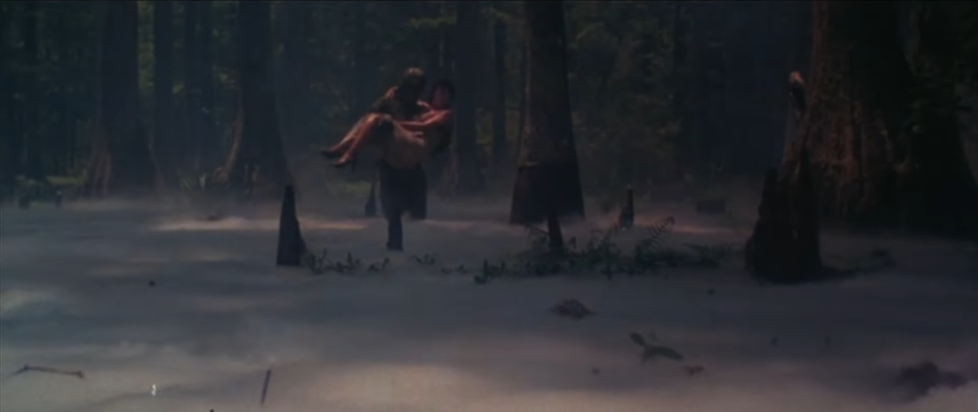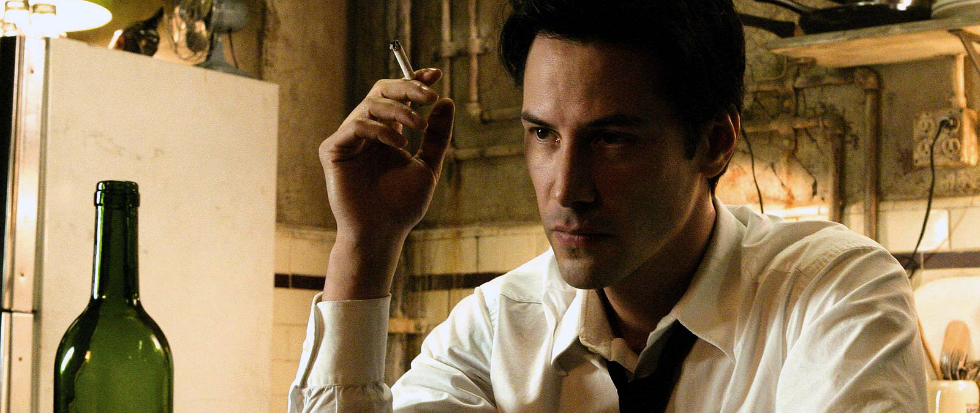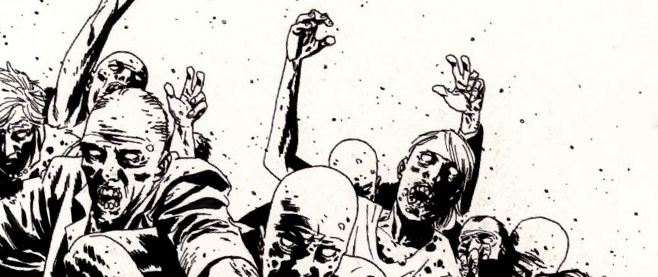
A Plant for the 21st Century: Swamp Thing (1982) on 4K from MVD
“We think maybe he bought the farm – or the vegetable patch.”
It’s weird to imagine Swamp Thing having a moment back in 1982, decades before the comic book capes and tights crowd came to dominate multiplexes, but that’s exactly what happened. Two years before Alan Moore’s definitive run on the title, and a decade after the character was first created by Len Wein and Bernie Wrightson, an unlikely film starring the muck-encrusted hero was greenlit, to be filmed on location in Cypress Gardens, South Carolina for a meager $2.5 million budget.
Despite the fact that comic book movies were not yet big business – even Tim Burton’s Batman was still seven years away – Swamp Thing boasts a surprising pedigree, all things considered. In front of the camera we have the likes of Adrienne Barbeau, who was still married to John Carpenter at the time, Ray Wise, and Louis Jourdan, who would play the villain in Octopussy the following year.
Meanwhile, behind the camera is none other than Wes Craven himself, not only directing the film but writing it, too. It was only Craven’s fourth feature film, and the hit for which he is best known today was still two years out. (Is A Nightmare on Elm Street really still the film that Craven is best known for, or has it been supplanted now by Scream?)
By most accounts, Craven was desperate to prove that he could move on from the modest ambitions of the indie films he had made previously and direct the kinds of pictures that studios expected. Hence, Swamp Thing takes a lot more swings at being “crowd-pleasing” than anything Craven had worked on in the past. There are people in military fatigues shooting machine guns out in the swamp, stunts and controlled burns and boat crashes and pyrotechnics galore. The fact that all of this is mostly incredibly boring doesn’t seem to have hampered Craven’s ability to move from here to something obviously more in his wheelhouse with Elm Street.
Swamp Thing performed well enough on home video and cable after its release to prompt a sequel in 1989, directed by none other than Jim Wynorski. And it didn’t end there. The ’89 sequel was followed by a live-action TV show on the USA Network that ran for three seasons, alongside a short-lived animated series that only ran for five episodes but nonetheless tied in with an action figure line from Kenner. Meaning that, in 1990, Swamp Thing was probably more heavily merchandized and licensed than pretty much any other comic book character around.
A lot of people seem to like this take on Swamp Thing, but I am not among their number. You can look any number of places to spot the movie’s failings, and even I would be hard pressed to point to one and say, “That’s the reason it didn’t work for me.” The script, over which Craven apparently did not have final approval, veers considerably from the comics, in directions that are often head-scratching. Some, like turning Holland’s wife into his sister, and turning Matt Cable into Adrienne Barbeau, are the kinds of things that you would expect to see in a movie adaptation of this kind of property.
Arcane becomes essentially a Bond villain – a trial run for the one Jourdan would play the following year – while Cable and Swamp Thing are given a young kid sidekick who is basically playing an only slightly updated version of a Willie Best comic relief character from an old dark house picture in the ‘30s.
These rarely improve on the source material, but they don’t always hurt it. More damning is the fact that the entire middle section of the film is an endless and interminable series of Adrienne Barbeau getting captured and re-captured by guys in army fatigues – a thing that wasn’t particularly arresting the first time it happens, and has certainly worn out its welcome by the fifth.

Perhaps the most significant – and detrimental – change to the story is in the way it complicates Swamp Thing’s simple and iconic origin. In both the comic and the film, Alec Holland is working on a serum that is essentially a super fertilizer, a way to make plants grow far beyond their usual capacity, developed with an eye toward ending world hunger. In the comic, the betrayals and tragedies that lead Holland to become Swamp Thing are simple and memorable. Here, they are unnecessarily complicated.
Worse, however, is what happens to the serum itself. By the end of the film, the transformed Holland has revealed that the serum merely “enhances” whatever you already are – so I guess we can assume that Holland was already a plant, and now he’s just more of one. Thus, when Arcane inevitably doses himself with the serum he turns into… a sort of armored warthog who swings a broadsword around and bleeds peanut butter. Sure, I can see that.
These often wrongheaded narrative decisions are exacerbated by the film’s meager budget. Sure, they spent enough on explosions and squibs, but the Swamp Thing suit, worn by actor and stuntman Dick Durock – who would continue to play the character in both sequel and live-action TV series – looks by turns decent and terrible, depending on where the camera is pointing and what Durock is required to do.
The fact that the Swamp Thing getup is basically just a wetsuit with some fake vines glued to it isn’t helped by the fact that Durock, who otherwise performs admirably in the part, moves like just a regular person, eliminating any sense that Swamp Thing is anything more than a strong guy in a green leotard. At the same time, the low budget is also responsible for some of my favorite parts of the movie, such as when Swamp Thing tears the roof off a car, and the roof then just floats gently away into the sky…
Ever since its initial release, Craven’s Swamp Thing has thrived on home video, which makes it a sensible choice for MVD to inaugurate their new “4K LaserVision Collection.” The release, which includes both a Blu-ray and 4K copy of the film, also boasts a newly-restored version of the unrated international cut, which is pretty much the exact same movie as the PG-rated theatrical cut, except that there are two sequences of extended nudity, one featuring Adrienne Barbeau, another taking place in Arcane’s… I dunno, harem, I guess. Both versions look as sharp and clear as can be expected, and Harry Manfredini’s bombastic score booms from the speakers. For fans of this somewhat misbegotten oddity, that’s probably all you needed to hear.
———
Orrin Grey is a writer, editor, game designer, and amateur film scholar who loves to write about monsters, movies, and monster movies. He’s the author of several spooky books, including How to See Ghosts & Other Figments. You can find him online at orringrey.com.




